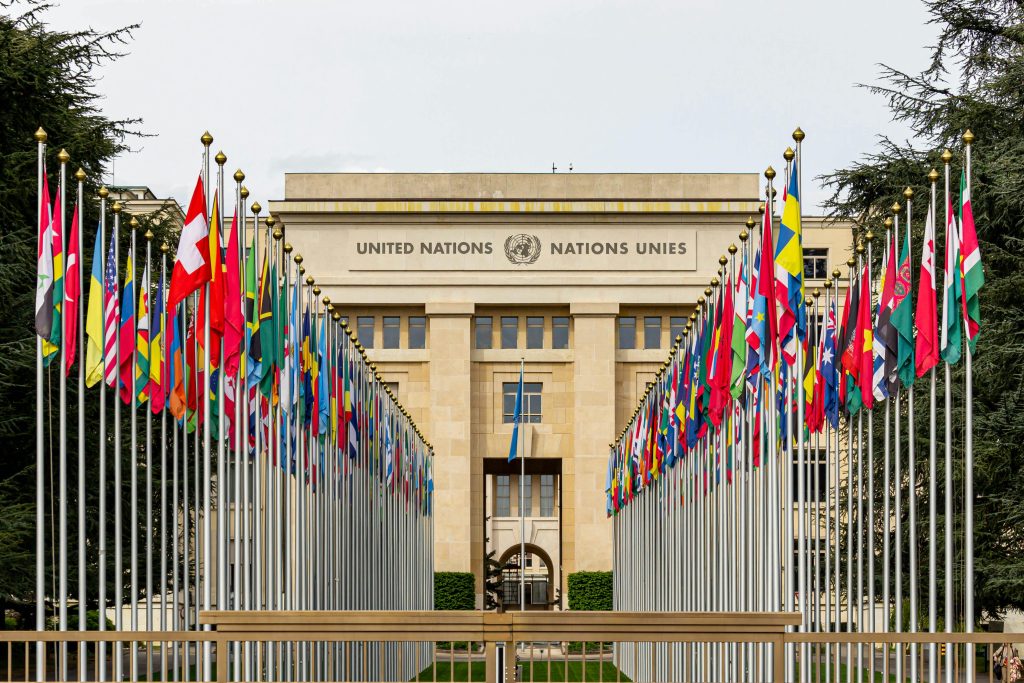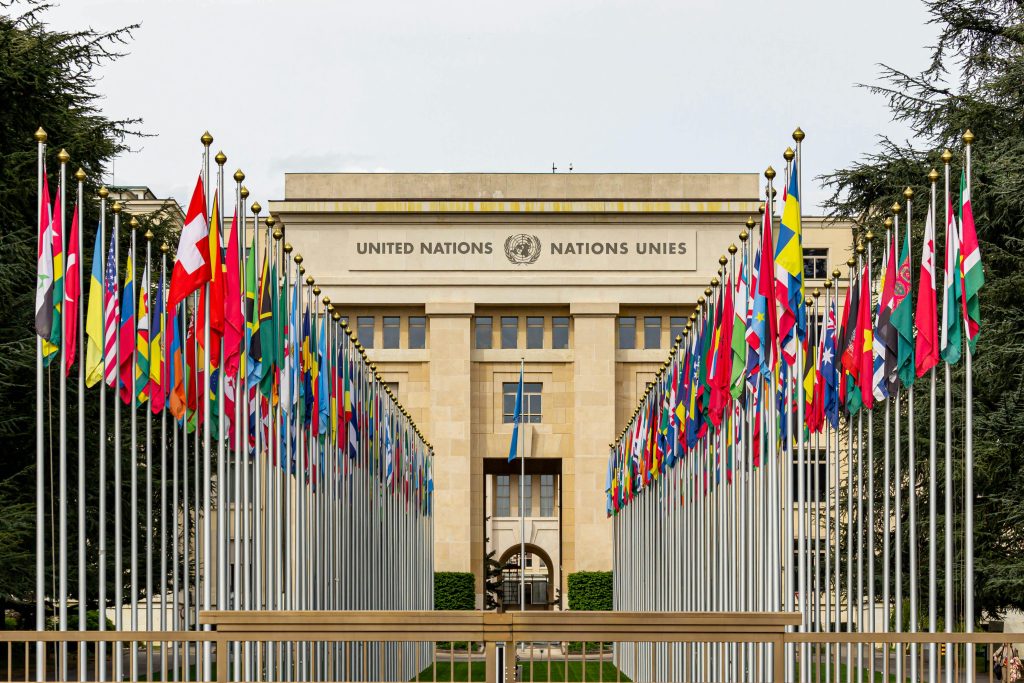Who is the author of “Diplomatic Footprints”?
Who is the author of “Diplomatic Footprints”? Read More »
A. G.W. Chaudhry
B. Aizaz Ahmad Chaudhry
C. Shuja Nawaz
D. None of these
B. Aizaz Ahmad Chaudhry
Who is the author of “Diplomatic Footprints”? Read More »
A. Yangon
B. Mandalay
C. Sagaing
D. Nypyidaw
D. Nypyidaw
What is the Capital of Myanmar (Burma)? Read More »
The global security landscape has shifted dramatically in recent years, and one of the most disruptive developments has been the Taliban’s transition from a non-state actor to a recognized governing authority. This transition has not only altered Afghanistan’s domestic politics but has also deeply impacted the security paradigm in the post-21st century.
In this article, we explore the conceptual implications of this transformation, how it challenges conventional understandings of state legitimacy, and how similar global trends signal a need to rethink traditional security frameworks.
For two decades, the Taliban was viewed primarily as an insurgent group—an armed non-state actor operating outside the bounds of international law and diplomacy. However, the group’s return to power in Afghanistan in August 2021, following the withdrawal of U.S. and NATO forces, marked a profound political shift.
Now functioning as the de facto government of Afghanistan, the Taliban has transitioned into a formal state actor, claiming responsibility for governance, law enforcement, diplomacy, and international negotiations. This development complicates long-standing global approaches to counterterrorism, international recognition, and diplomatic engagement.
This shift is not just a matter of classification—it represents a foundational disruption to the security paradigm in the post-21st century.
In traditional international relations theory, state legitimacy is tied to defined borders, a monopoly on the use of force, and recognition by the international community. Non-state actors like the Taliban were often viewed as temporary threats to be managed or neutralized.
However, the Taliban’s persistence, strategic patience, and eventual return to power without major resistance have challenged the assumption that only traditional state actors can wield long-term influence. This forces a reconsideration of several core assumptions:
The Taliban controls Afghan territory and institutions, but its recognition by the global community remains limited. This raises complex questions: Can a government be legitimate without widespread international recognition? How do we measure sovereignty in an era of hybrid warfare and decentralized governance?
Groups like the Taliban were once universally labeled as terrorist organizations. But now, as they manage ministries, issue laws, and conduct diplomacy, the international community is split between engagement and isolation. This shift blurs the line between violent non-state actors and traditional governing bodies—altering the security paradigm in the post-21st century.
The Taliban’s rise has sent ripples through regional and international security frameworks. Here’s how:
The Taliban’s success may serve as a model for other insurgent groups seeking to transition into legitimate political actors. Movements in the Middle East, Africa, and even parts of Southeast Asia may attempt similar transitions, leading to new security threats and unstable political experiments.
The U.S. and NATO withdrawal signaled a strategic shift in counterterrorism efforts—from boots-on-the-ground interventions to remote operations and diplomatic containment. However, the Taliban’s rise complicates these strategies, forcing new considerations in intelligence gathering, drone warfare, and regional alliances.
Countries like China, Russia, Iran, and Pakistan have begun engaging with the Taliban, seeking to secure their interests in the region. This creates new alliances and rivalries that challenge Western influence and reshape the security paradigm in the post-21st century.
The Taliban is not the only case of a non-state actor transforming into a formal governing authority. Comparable developments around the world show that this is part of a broader global pattern.
Hezbollah began as a militant group but has evolved into a significant political force in Lebanon. It participates in elections, holds seats in parliament, and maintains armed forces. Like the Taliban, Hezbollah straddles the line between state and non-state actor—complicating both domestic governance and international diplomacy.
Hamas has administered the Gaza Strip since 2007, providing social services, security, and governance. Despite being classified as a terrorist organization by many Western countries, it operates with many characteristics of a state actor—highlighting the challenges of labeling and engaging such entities.
The Houthi movement in Yemen has taken control of significant portions of the country, establishing administrative systems and military command. Their control, combined with limited recognition, mirrors the Taliban’s trajectory and presents another example of blurred political and security lines.
These examples reinforce the reality that traditional security models may no longer be sufficient to address the complexity of emerging actors. A revised security paradigm in the post-21st century must account for such transformations.
Given these evolving dynamics, how should the international community rethink its approach to security?
Security in the 21st century must go beyond the Westphalian model of sovereign states. Hybrid actors, gray zones, and fluid governance models now play an increasingly important role in shaping global affairs.
Rather than complete isolation, some degree of pragmatic engagement may be required. Diplomacy with de facto governments—while controversial—can help prevent humanitarian crises and promote regional stability.
Long-term security cannot rely solely on military solutions. Economic aid, education, and institutional development are key to stabilizing post-conflict regions where non-state actors have gained power.
Addressing modern security threats requires cooperation across national, regional, and global levels. International institutions must adapt to recognize the influence of emerging actors and build more inclusive mechanisms of engagement.
The Taliban’s transition from a non-state actor to a formal governing authority has profoundly altered the security paradigm in the post-21st century. It compels policymakers, academics, and security experts to reexamine traditional concepts of legitimacy, power, and international engagement.
As similar transformations take place globally, the international community must shift from rigid, state-centric frameworks to more adaptive, realistic, and multidimensional strategies. Only then can we respond effectively to the new geopolitical realities of the 21st century and beyond.
As international relations grow more complex, nation-states are reassessing traditional methods of diplomacy and collaboration. One of the most significant shifts in recent years is the rise of minilateralism, widely recognized today as a modern approach to foreign policy. It reflects a practical, flexible, and targeted method of achieving foreign policy objectives without the heavy constraints of traditional multilateral institutions.
Unlike multilateralism, which involves large numbers of countries working through extensive diplomatic frameworks like the United Nations or World Trade Organization, minilateralism brings together a limited number of actors with shared goals. This more focused and strategic collaboration is helping states respond to global challenges with greater efficiency and clarity.
In this article, we’ll examine how minilateralism developed, what factors are driving its adoption, and why it is increasingly preferred as a modern approach to foreign policy.
Minilateralism is a foreign policy strategy where a small group of countries—usually those with shared strategic interests—form partnerships to tackle specific issues. These issues can range from climate change and regional security to trade and technological cooperation.
As a modern approach to foreign policy, minilateralism shifts away from consensus-driven, large-scale diplomacy. Instead, it focuses on building partnerships that are more manageable, agile, and capable of delivering measurable outcomes. This trend is especially visible in new groupings such as:
These examples demonstrate that minilateralism is more than just a temporary solution—it’s becoming a long-term strategy and a reliable modern approach to foreign policy in a multipolar world.
Minilateralism has gained traction in the 21st century due to several key developments that have reshaped global diplomacy:
Traditional multilateral institutions are often criticized for being slow, bureaucratic, and ineffective. The requirement for consensus among dozens or even hundreds of nations often leads to watered-down agreements or prolonged deadlocks. Many nations have become disillusioned with these forums and instead seek faster, more targeted methods—hence the rise of minilateral diplomacy as a modern approach to foreign policy.
The international system is no longer unipolar. With the rise of regional powers like China, India, and Brazil, global governance has become more decentralized. In this environment, small and strategic coalitions of countries are better suited to managing specific regional or thematic concerns, making minilateralism a viable alternative.
Global problems such as pandemics, cybersecurity threats, environmental disasters, and energy crises demand rapid and coordinated responses. Minilateral frameworks enable states to act quickly without the procedural delays of large institutions. This need for rapid action makes it an appealing modern approach to foreign policy.
Minilateralism allows countries to collaborate with like-minded partners who share similar values, such as democratic governance, free-market economies, or regional security goals. This alignment fosters trust and smoother diplomatic cooperation compared to multilateral bodies that include conflicting ideologies and national interests.
Several tangible benefits are motivating countries to choose minilateralism over traditional diplomatic approaches. These include:
Small groups make it easier to negotiate, make decisions, and take action. In fast-changing geopolitical environments, this ability to act promptly is crucial.
Minilateral partnerships are often issue-specific. Whether it’s maritime security, technological development, or economic policy, such coalitions are able to concentrate resources and expertise on targeted outcomes.
Fewer members mean less bureaucracy, lower administrative costs, and more direct communication between decision-makers. This aligns with the principles of a modern approach to foreign policy that emphasizes streamlined processes.
Because the group is smaller, each country has a clearer understanding of roles and responsibilities. This improves transparency and the likelihood of successful implementation of agreements.
Minilateralism provides flexibility in forming partnerships and adapting policy goals. Unlike rigid international treaties, these frameworks allow room for experimentation and innovation.
| Feature | Minilateralism | Multilateralism |
|---|---|---|
| Size of Group | Small, strategic | Large, inclusive |
| Speed of Action | Fast and focused | Slow and consensus-driven |
| Decision-Making | Simplified and direct | Complex and lengthy |
| Flexibility | High adaptability | Lower flexibility |
| Scope of Cooperation | Issue-specific | Broad and general |
| Accountability | Easier to track | Harder to enforce |
While multilateralism promotes inclusivity and global consensus, it often struggles to deliver timely or practical solutions. Minilateralism, in contrast, embodies the traits of a modern approach to foreign policy that prioritizes outcomes over process.
To better understand how this modern approach to foreign policy works in practice, consider the following examples:
Formed by the U.S., Japan, India, and Australia, the Quad addresses regional security in the Indo-Pacific. It includes joint military exercises, tech partnerships, and coordinated responses to regional threats—without needing UN approval.
This trilateral defense pact between Australia, the U.K., and the U.S. focuses on sharing military technology, including nuclear-powered submarines and cybersecurity infrastructure. It bypasses larger, slower institutions while still achieving impactful results.
This Latin American trade bloc (Chile, Colombia, Mexico, and Peru) is another example of a minilateral partnership fostering regional economic growth and open-market policies without global institutional involvement.
These examples illustrate how minilateralism is actively shaping diplomacy in multiple regions—confirming its role as a modern approach to foreign policy.
Looking ahead, minilateralism is expected to play an even more central role in foreign policy decision-making. As international challenges grow more complex and interdependent, states will continue seeking practical and reliable ways to protect their interests and contribute to global solutions.
However, it’s important to note that minilateralism should not replace multilateralism entirely. Instead, both approaches can coexist. While minilateralism serves as a modern approach to foreign policy offering speed and precision, multilateralism remains vital for addressing issues requiring broad international consensus, such as nuclear disarmament or climate treaties.
Minilateralism represents a strategic shift in how states interact on the global stage. As a modern approach to foreign policy, it aligns with today’s diplomatic needs—efficiency, relevance, and results. In a world increasingly shaped by regional dynamics, urgent crises, and power multipolarity, minilateralism offers a viable pathway for achieving meaningful international cooperation.
By embracing smaller, smarter, and more focused alliances, countries can navigate foreign policy with greater agility and confidence—while still contributing to global peace and stability.
Related Readings:
When studying international relations, most students are introduced to theories developed primarily in the West—realism, liberalism, and constructivism, among others. While these paradigms offer valuable insights, they don’t fully capture the diverse worldviews and historical experiences of the Global South. That’s where the key theoretical perspectives of non-Western approaches come in.
These perspectives offer unique frameworks rooted in cultural, philosophical, and historical traditions from Asia, Africa, Latin America, and the Middle East. They enrich our understanding of how global politics evolve and operate, offering alternative views that either complement or challenge traditional Western paradigms.
One of the most cited non-Western theoretical perspectives is Tianxia, a concept derived from ancient Chinese political philosophy. Meaning “All Under Heaven,” Tianxia proposes a world order based on moral leadership, hierarchical harmony, and cultural unity rather than conflict and competition.
Unlike Western realism, which assumes international anarchy and power struggles, Tianxia envisions a world led by a central, morally upright authority that maintains peace through virtue and shared values. This model challenges the Western idea of sovereign equality and instead focuses on relational power and mutual responsibility.
Islamic theories of world politics are rooted in the Quran, Hadith, and Islamic jurisprudence. These perspectives emphasize justice (adl), compassion, unity (ummah), and ethical conduct in both domestic and international affairs.
A key idea is that the purpose of politics isn’t just maintaining order or gaining power—it’s about upholding moral values and serving the community. This challenges secular Western IR theories that separate religion from politics and often neglect spiritual or ethical considerations in diplomacy and governance.
In many African societies, the philosophy of Ubuntu—”I am because we are”—serves as the foundation of political thinking. This perspective emphasizes interconnectedness, communal well-being, and reconciliation over individualism and confrontation.
African international relations scholars have used Ubuntu to argue for more cooperative diplomacy, conflict resolution through dialogue, and holistic security strategies that address both human and environmental needs. This directly complements and, at times, challenges the adversarial and state-centric models prevalent in Western theory.
Postcolonial theory, developed by scholars like Edward Said and Gayatri Spivak, focuses on how colonialism and imperialism have shaped global political structures and academic knowledge. This approach critiques the Western domination of international relations and calls for the inclusion of marginalized voices.
Subaltern studies go a step further by examining the experiences of those left out of the historical record—peasants, women, indigenous groups, and others who were silenced by dominant powers. These perspectives push for a decolonized, more inclusive understanding of world politics.
Developed primarily by Latin American thinkers like Raúl Prebisch and Andre Gunder Frank, dependency theory argues that global capitalism inherently favors wealthy nations while keeping poorer ones in a state of economic dependence.
Unlike liberalism, which assumes free markets benefit all, this non-Western theoretical perspective reveals how global structures perpetuate inequality. It also critiques the Western notion of development by showing how some nations remain trapped in poverty due to historical exploitation.
The key theoretical perspectives of non-Western approaches bring several benefits to the field of international relations:
Incorporating the key theoretical perspectives of non-Western approaches is essential for building a more inclusive and accurate field of international relations. These frameworks don’t just add diversity for diversity’s sake—they offer meaningful critiques and solutions that reflect the real dynamics of a multipolar world.
As global power shifts and new actors rise, it’s more important than ever to understand the world through multiple lenses. Embracing non-Western perspectives in world politics helps scholars, policymakers, and students alike navigate a more complex and interconnected global order.


